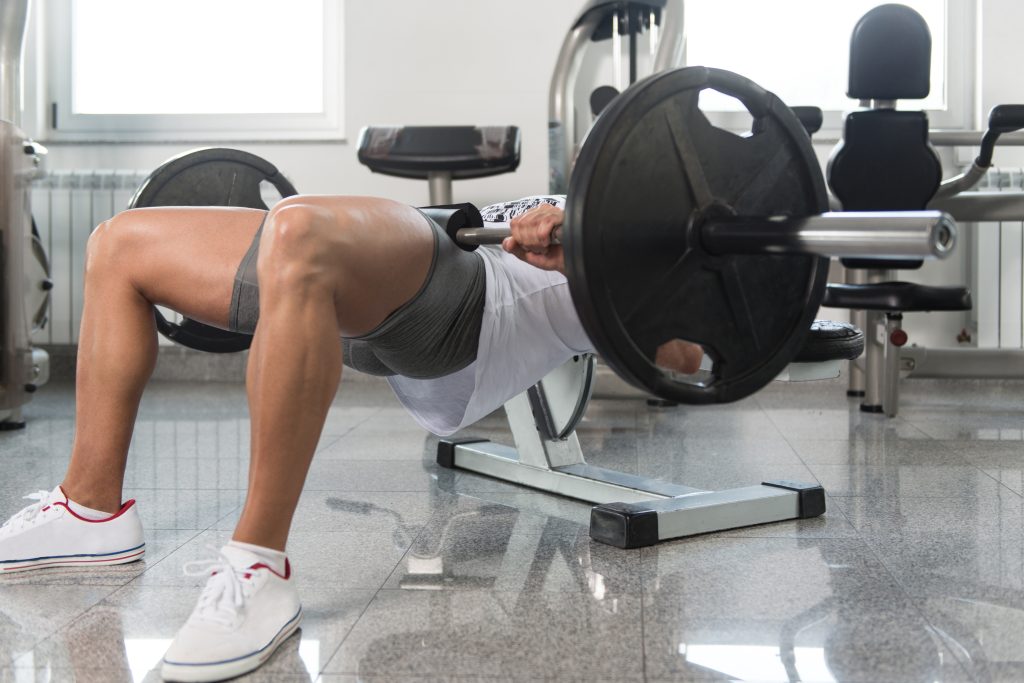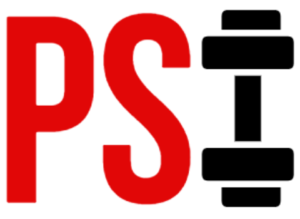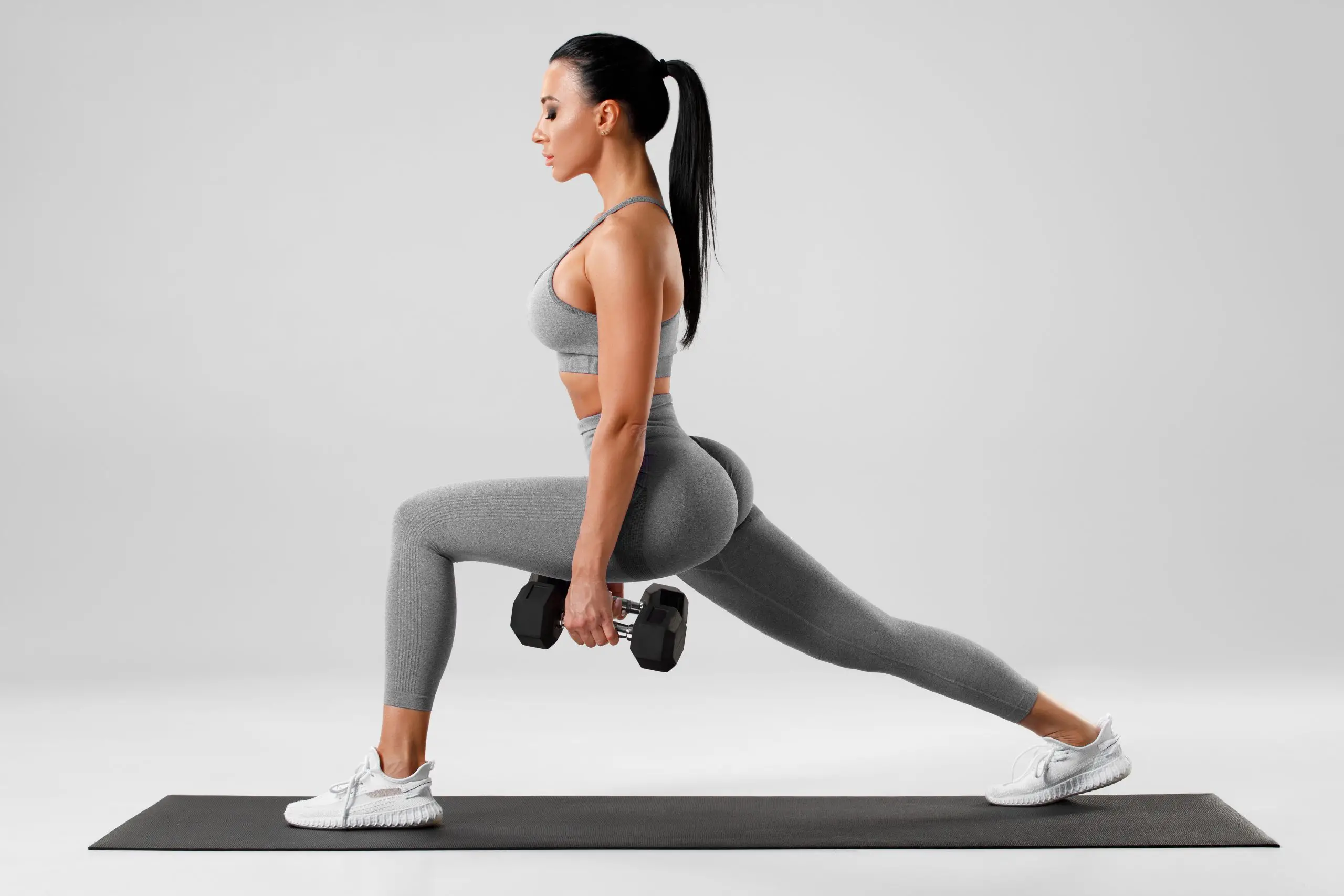Whether you’re a beginner or an experienced athlete, chances are you’re looking for ways to pump up those glutes. Luckily for you, we have just the thing: the 10 best glute exercises for MASS!
From squats to hip thrusts, there is a variety of lower body exercises to choose from. But when it comes to getting maximum results in minimum time, these 10 moves are the way to go. We’ve tried them out and can vouch for their effectiveness (trust us: you won’t be disappointed).
Let’s get down to business! In this article, we’ll show you how to target your glutes with each exercise and outline some tips on how to get the most out of your workouts. So without further ado, let’s dive into our list of the best glute exercises for MASS!
Glute Dominant Squat
If you want to build big and powerful glutes, there is no better way to do so than by Squatting. Squatting is a great lower body exercise that targets your glutes, quads, hamstrings, calves, and core muscles all at the same time. Variations of the Squat like the Back Squat can be used to concentrate more on the glutes for more powerful results.
For your back squats, making sure you extra form is important as it helps to ensure that you are focusing on properly activating your glutes rather than using other muscles to take over. You can also use a Smith machine which can allow for further stability while doing different variations of the squat such as a Bulgarian Split Squat or Sumo Squats.
The combination of a great form and the right exercises will help you build your glutes into powerhouse muscles in no time!
Check out this video where Joe Bennett (Hypertrophy Coach) explains how to maximize glute activation during a squat. The whole video is very good, but I have started it where the demonstration begins – if you just want to see what a glute dominant squat looks like.
Hip Thrusts For Glutes
When it comes to the best glute exercises, you need look no further than hip thrusts. This exercise targets your glutes more than just about any other exercise, meaning that it’s a great choice for building glute size and strength. Plus, not only do hip thrusts target the gluteus maximus, they also target the other two major muscles of your butt—the gluteus minimus and the gluteus medius—so you get a full glutes workout in just one exercise.
But don’t take our word for it—research suggests that hip thrusts are an effective exercise to increase muscle growth and even narrowly beat squats as the best glutes exercise! But that doesn’t mean you should ditch squats altogether; doing both lifts together will give you great results.
How to perform barbell hip thrusts:
- Place a bench behind you and sit on the floor with your back against the bench.
- Place a barbell across your hips, holding it firmly in place with both hands.
- Push up with your feet while raising your hips along with the barbell until they are parallel to the floor.
- Hold this position for 2-3 seconds before returning to your starting position.
- Repeat this movement for 4 sets of 8-10 reps each set or adjusting reps according to fitness goals
@chiara_pugliesi gives a great example here:
Split Squats For Glutes
Split squats are a great way to get the most out of your workout and target both your hamstrings and glutes. Also known as Bulgarian Split Squats, this exercise will help improve lower body strength, power and mobility through your hips and ankles.
How to do Split Squats
Split squats can be done with or without weights, making them versatile for all levels of fitness. To do the exercise, begin standing in a split stance with one foot on an elevated surface using a bench, chair or box. Bend your knees until they reach 90 degrees while keeping the rest of your body in a neutral position. Make sure that you keep your chest up and back straight throughout the exercise. Push through your feet to return to the starting position.
Here are some tips for maximizing glute activation during a split squat:
- Start from the ground. You want to make sure you are in a comfortable position in the down position, so start there.
- Foot position matters. The further out you place your foot, the more glute activation you will get. Start at 90 degrees and adjust your foot a few inches forward to activate more glute.
- Drive through the heal.
- Thrust the hips forward as you drive up.
When doing split squats, it’s important to focus on quality movement instead of speed. Aim for slow movements with good form instead of cranking out reps as quickly as you can!
Doing split squats with weight is an even bigger challenge, as it will help further develop lower body strength, power and stability in your glutes and hamstrings—which will all contribute towards achieving that coveted muscle mass!
Check out this video from Mind Pump TV where Adam Schafer demonstrates how to maximize glute activation during a split squat.
Romanian Deadlift For Glutes
The Romanian deadlift is a powerhouse of glutes, hamstrings, and core stabilization all in one. Plus, because it targets the entire posterior chain—which runs from the neck all the way down to your feet—you’re engaging your gluteus maximus, hamstrings, adductors and your erector muscles.
With Romanian deadlifts you can really emphasize your glute, hip and hamstring muscles. Plus, you can use more weight than with regular deadlifts because there’s no need to lift the bar up with your arms against your body like you do with a traditional deadlift.
To do a Romanian Deadlift:
- Start standing with a barbell in both hands and arms at full extension.
- Keeping your torso straight and knees slightly bent, hinge forward from the hips while lowering the barbell towards your feet until you feel the stretch in your hamstrings.
- Push through your heels back to standing position and repeat for desired reps.
Tips for targeting glutes during a Romanian deadlift:
- Push your hips back (Stick your butt out)
- Slightly Bend at your knees. Keeping your legs completely straight during the exercise will activate more hamstrings than glutes.
- Push through your heels
- Don’t go too low. It’s possible to lose glute activation during the exercise by overextending your back.
@chiara_pugliesi gives us another great example here:
This effective exercise should definitely be part of any fitness regimen looking to build serious size in their glutes!
Sumo Squat For Glutes
The Sumo Squat is an effective exercise to target the glutes and is a great move to add into a workout routine for lower-body strength. To master the Sumo Squat, stand with feet wider than hip-width apart and toes pointing outwards. Then, lower your hips back and down as if you are about to sit on a low chair. Make sure your knees don’t cave in—you want to fire up the outer glutes to prevent this. Pause when your thighs are parallel to the ground then drive your heels into the floor and squeeze your glutes as you press up back into a standing position. You can start with bodyweight, then progress to Dumbbells or Barbells for resistance as you get stronger.
Tips for performing a proper sumo squat and activating maximum glute:
- Place your feet in a wide stance – slightly wider than shoulders
- Point your toes out slightly
- Push your hips back / butt out
- Push through your heels
@HelenicFit Gives us a great example here:
The sumo squat is a great lower body exercise. When performed properly, it will be a great addition to your arsenal of glute exercises and help you add mass to your backside.
Reverse Lunges For Glutes
Reverse lunges are a great exercise for your glutes—they target the gluteus minimus and medius. And, if you’re aiming for some serious glute mass, then you should definitely give reverse lunges a try.
How To Do Reverse Lunges
Start with your feet hip-wide apart, while keeping your back straight. Step backward with one leg, dropping it until your knee is close to the ground and bending the other leg until it’s at a 90-degree angle. Push off your heel to return to the starting position and repeat with the opposite leg. Make sure that you don’t let your front knee go past your toes when dropping down.
Make It harder
If regular reverse lunges are too easy for you, then try deficit reverse lunges—you’ll need to step backward even further so that there’s a larger range of motion and more demand on the muscles involved. Deficit reverse lunges target several muscles in the lower body, but they place more emphasis on your glutes.
Tips for targeting glutes during a reverse lunge:
- Make sure your torso is angled forward and not straight up and down
- Use a step or other device to put your front foot on – This will increase your range of motion
- Make sure your back knee is reaching the floor
- Your front shin should be in a vertical position
Check out this video where Joe Bennett (Hypertrophy Coach) explains the proper form, to target your glutes during a reverse lunge.
Leg Press For Glutes
Adding weights that work your glutes can be a great way to get the results you want for shaping and toning your backside—and one of the best exercises for this is the leg press. It not only works all of the muscles in your upper legs, including the gluteus maximus, but it also allows you to increase or decrease weight to match your own strength.
The leg press may seem simple, but it’s actually an incredibly effective exercise. To make the most out of it, try putting your feet higher up on the foot pad—this will encourage more activation from your glutes and hamstrings. To really make sure you’re getting into those muscles, unhinge the weight a bit and press your feet back at a 45-degree angle by straightening your legs. Not only will this activate those muscles more properly, but it will also help build stability and strength in the long run.
Tips for targeting glutes during the leg press:
- Place your feet higher on the foot pad
- Foot placement should be shoulder width apart or slightly more narrow (not wide)
- Pull hard on the machine handles to pull yourself into the seat – your glutes should be touching the seat during the entire exercise
- Push through the heel
In the below video from coach Alex and coach Sue of Physique Development, you will see a great demonstration.
Good Mornings For Glutes
If you’re looking for something to really fire up your glutes, Good Mornings are the way to go. Not only do they increase glute and hamstring strength, but they also recruit mainly the glutes, hamstrings, and spinal erectors.
For Good Mornings, here’s what you do:
- Start with your feet slightly wider than shoulder-width apart.
- Bend your knees slightly and hinge forward from the hips with a flat back until your torso is at about a 45-degree angle from the floor (similar to a standing plank).
- Return to the standing position and repeat for 10-15 reps.
It’s important to really engage those glutes during each rep – this is one of the best workouts you can perform to target those hard-to-reach areas and get maximum results when it comes to glute mass and strength!
Tips for targeting glutes while doing good mornings:
- Push your hips / butt back
- Shins should stay vertical during the entire movement
- Break at the hips first and then allow a slight bend at the knees as the bar comes down / forward
- Don’t allow the knees to bend too much. Only what is necessary to complete the movement (It’s not a squat)
Here’s a quick video from Jeff Nippard which explains proper form to target your glutes during a good morning.
Deadlift For Glutes
When it comes to building up those glutes, conventional deadlift is the name of the game. This incredibly effective exercise targets all your lower body muscles and activates your glutes more than anything else. And once you master conventional deadlifts, you can move on to other variations such as sumo deadlifts, glute bridges, barbell hip thrusts and back extensions deadlifts – all great exercises to build and strengthen glutes for increased power and performance when doing deadlifts.
Tips for activating your glutes during the deadlift:
- Knees should be slightly bent
- Let the weight come all the way to the ground for an elongated stretch of the glutes
- Pause at the bottom of the movement to maximize the glute stretch
- Perform the exercise on a step or short block to increase the range of motion and maximize the stretch
In the below video from Dr. Mike at Renaissance Periodization we can see a great example.
Walking Lunges For Glutes
Walking lunges are a great exercise for toning your glutes, hips and thighs and when it comes to building serious mass, walking lunges are your friend! Not only do walking lunges increase gluteus minimus and medius activation, but they also hit the posterior chain with more intensity than any other resistance exercises.
So why are walking lunges so good for building glutes? Well, they increase muscle activation in the lower body by forcing it into an extended position that activates muscles like the glutes and hamstrings. They also force you to use your core muscles, adding another layer of difficulty at the bottom position in the stretched position. And because they’re generally done with body weight, you can easily add more resistance by adding dumbbells or a barbell.
The trick to making walking lunges effective is proper technique — make sure to keep your torso upright and swing your arms as you move forward to help maintain balance and propel you in between steps. Take nice slow steps so that you keep continuous tension on your muscles without putting strain on your joints.
Tips for maximizing glute activation during the walking lunge:
- Take extra wide (forward) steps to increase hip flection
- Let your torso fall forward in the down position
- Drive hard through the heel of the front foot
- When taking strides / stepping forward during the walking lunge, try to walk as if you are walking a wide tight rope (one foot almost in front of the other)
Here’s a great example from Physique Development:
Progressive Overload
Once you’ve been practicing your deadlifts, lunges and other exercises, it’s important to also focus on progressive overload. This means increasing the load or resistance over time to ensure your glute muscles are constantly being challenged and ‘forced’ to grow. You can do this by increasing the weight you lift, or the amount of reps you complete per set.
For example, if you started with a certain weight for your squats, next time aim for a slightly heavier weight to ensure your glutes are working that bit harder.
How Often To Train Glutes For Growth
You’ve probably seen everything from once a week to everyday but the most common recommendation is to train the glutes twice a week – on non-consecutive days.
Twice per week training will allow you to focus on building size and strength, but will also give you plenty of time to rest and recover before your next workout.

The Importance of Rest and Recovery
Your muscles don’t grow while you are training them. They grow as they are recovering. Training everyday or too close to your last training session can actually hinder growth. It’s best to let your muscles recover for 2-3 days before training them again.
Proper sleep sleep and nutrition are very important for muscle growth. Consider getting to bed early to maximize the benefits of your training session.
Conclusion
Building glute mass requires a combination of compound exercises, isolation exercises, and progressive overload. By incorporating the 10 best glute exercises into your workout routine, you can target your glutes from all angles and maximize muscle growth.
Remember to focus on proper form, increase weight and reps over time, and give your glutes adequate rest and recovery. With consistency and dedication, you can achieve strong, firm, and shapely glutes that will not only enhance your appearance but also improve your overall health and fitness.

